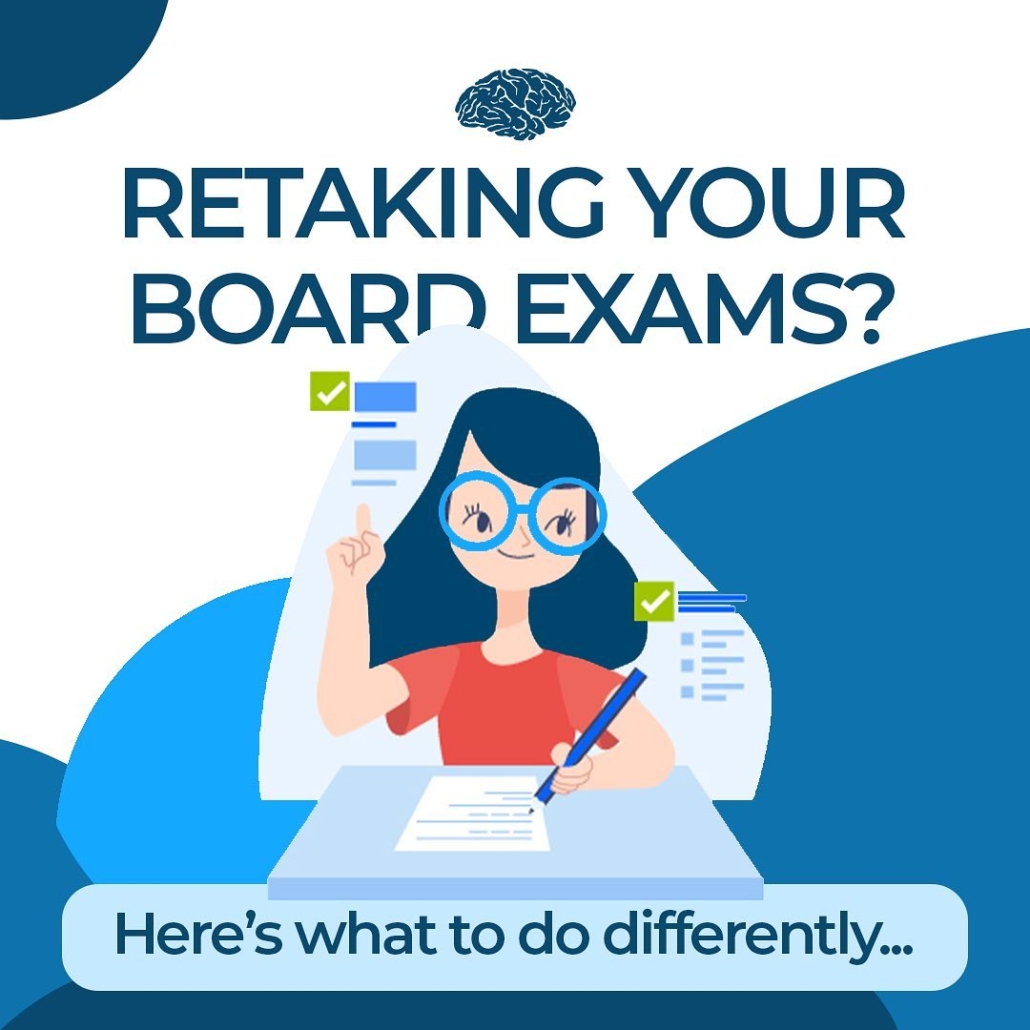The time has finally come… you’re locked in, ready to go, and you’re going to ace your retake exam. Why? Because you’ve followed our TOP 5 tips that ensure your success in passing your Psychiatric Board Exam with ease!
1 – Analyze Your Weak Points
If you know where you struggled with most in the last board exam you can hone in on intaking as much information as you can retain. These don’t need to just be areas you did pool on previously, but could also be ones that could be further reinforced. Try out My Psych Board’s customizable tests that zero in on your most missed questions!
2 – Focus On The NOW
The past is the past, there’s no point in going back! The only way to move in a positive direction is forward. Learn from your mistakes and how you can apply what you’ve learned for better-guaranteed results. If you stay focused on past failure it’s only going to bring negativity and additional stress to your study sessions.
3 – Create A Plan
When studying it’s essential to make the most of your time. Create a plan tailored to your needs. Before you can even begin studying you need to make sure you have all the resources you need. Organize items into folders, check you have all the materials you need, and tidy up your study spot.
4 – Utilize Detailed Questions Banks (like ours here)
With detailed Q-Banks, you’ll get the blueprints, questions, detailed information, vignettes, and more! Within the question breaks, you can get real-time feedback on correct answers, and learn where you’ll need to continue to improve.
BONUS TIP: Did you know we offer FREE Trials of all of our Question Banks? Click here to try today (with no credit card required…)
5 – Take Regular Breaks
As with anything don’t overdo it, You need to ensure you aren’t pushing yourself too far! When you’re studying and preparing for the exam you’re taking a mental health break. This will help break up your studying time, keep you from feeling overwhelmed, and ensure you’re retaining all the information you’re taking in.
Still, feeling uneasy? Contact us and we can help YOU pass your boards with ease!




How to Never Forget Types of Boundaries
/in General, Health and WellnessEveryone should be aware of their boundaries. While that seems like a no-brainer, it’s not uncommon for people to either be unaware of what boundaries are, or, be caught by surprise that they’ve been neglecting to maintain a healthy boundary with someone in their life. And while you may be well aware of what they are, sometimes it’s difficult to recall exactly what they look like in practice. We have a way to keep them in mind!
Boundaries are a vital part of how we interact with others. They help us keep relationships safe and healthy, while also keeping ourselves safe and healthy. Have you ever had an interaction with someone that left you feeling unintentionally vulnerable or exposed? Or taken advantage of? That niggling discomfort is usually a good indicator that your boundaries have been violated.
What are the types of boundaries?
There are different boundary styles. As anything, it’s rarely cut and dry that people adhere to one type or the other. There’s some interesting connection between boundary and relational attachment styles that is worth delving into if this topic interests you!
Some ways to think about boundaries are in terms of octopuses, brick walls, and windows. What? –Yes, you read that right.
A person who may be like an octopus is someone with little to no boundaries with themselves or others. They reach their tentacles into other people’s lives and envelope other people into their lives. They have little distinguishing regard for what topics are appropriate to share, they don’t say “no” to being asked anything (and usually expect the same from others), and often suffer from burn out because of this.
A brick wall boundary is as you may imagine, a person who has rigid and unmoving boundaries. They also, unfortunately, have great difficulty having close relationships with others because they are unwilling to allow others into intimate spaces with them. They may seem cold, or distant, while also being quite lonely and disconnected.
Lastly, a window. Windows represent a person that has firm boundaries in place that allows them to keep others at a reasonable distance, while also allowing them to view the world and open up when appropriate. They can close themselves off to people when necessary, but also allow for intimate closeness.
This is, of course, a very simplified conceptualization of a much broader topic. But, now when you think of boundaries you’ll probably unconsciously think about octopuses and brick walls, which is more fun than thinking about technical terms
Other than our unconventional ways of discussing psycho-relational topics, we also offer tutoring options, study guides, and have a whole arsenal of topics in our Question Banks . Contact us for more information!
Easy Ways to Make Time for Self-Care
/in General, Health and WellnessSelf-care can mean a lot of different things to different people. When you’re in the throes of studying, conducting observerships or rotations, and juggling professional and personal life events, it can be easy to forget to take a minute for yourself.
It’s important to unplug from everything once in a while and give yourself permission to just take care of yourself. As someone in the profession of caring for others, don’t put yourself in the backseat all the time! Self-care doesn’t have to be elaborate or time consuming (unless you want it to). Here are a few ideas if you need a nudge in the right direction to take a breather:
Easy Self-Care Ideas
This is of course the tip of the iceberg. How you recharge is completely dependent on your personality and personal preferences. Some people like being alone, and others feel revitalized by being around more people. Some people love being outdoors, and others would rather stay inside in the air conditioning on a sunny day.
Really, all that matters is that you’re cognizant of when you’re starting to feel burned out, and you take a step back to care for yourself. What are some of your favorite ways to take “me” time? Or better question, when was the last time you took that time?
We are in the business of helping you get on track professionally, but that also includes making sure our future and current practitioners are also taking care of themselves. Need more assistance? We offer tutoring options, study guides, and have a whole arsenal of topics in our Question Banks . Contact us and see how My Psych Board can help you!
How to Read Vignettes- Efficiently!
/in Board Prep, StudyingOne of the sections of exams students have the most difficult time with is the vignettes section. We’ve discussed this topic before here, where we show how to break down the process of answering vignettes. But in this blog, we’ll get into the nuts and bolts of reading the passages a little more effectively.
Formatting is everything
First, how you approach vignettes will depend on what format they are in. A video vignette requires you to sit through a segment of recorded interactions and glean information off of those interactions (usually between and doctor and patient). A written vignette gives you a block of information you can refer back to to answer questions.
The key difference between these two is time management. For a video vignette, you won’t want to waste your exam time going back and re-watching the video (which isn’t allowed in some cases, anyway). You can’t control the speed that the video plays, so you’re at the mercy of the media to go through its time. Because of this, you’ll want to pay close attention as you watch through the video the first time. Thankfully, bits of video can stick out as they’re composed of dialogue instead of raw facts, and this can help recall later.
Video Vignettes
As you watch the videos, keep in mind what should stick out- deviances from typical life, distress from a symptom, dysfunction due to ongoing issues, or potential danger to the self or others. This is a simple concept, but it’s usually the part that you need to pay attention to. An important factor in video vignettes to pay attention to is HOW to patient says these things. You’ll likely be quizzed on not only the information presented, but also how that information is delivered. Is the patient frenzied, calm, mood incongruent, or lethargic? Is that relevant to what they’re saying? It’s a lot to keep track of, but when you have to spend your time wisely, it’s best to dial into those videos.
Written Vignettes
Conversely, written vignettes will take up your time in a different way. Typically you’re presented with a fleshed out story and asked to determine answers that are either insinuated or determinable based on that information. For these, you can go back and re-read sections as you go. This means you don’t have to be laser-focused the first time reading it, and you can refer back to it. But this also means the questions involved may be a bit trickier and require more introspection. Keep in mind the basic information presented (i.e., demographics, time range of symptoms, key issues going back to the 4 D’s). Then as you delve deeper into the questions, refer back for more specifics.
Take away-
Vignettes are challenging. And they should be, as they are the more accurate representation of what it’s like working with real-life patients. And just like patients, they have their individual quirks that make them unique each time. A great way to get comfortable with these questions is the PRACTICE! Take time to go through and get used to what kind of information you need to pay attention to, in a setting that doesn’t penalize you for time.
We tailor each bank to the type of test you’re taking, whether that is Nurse Practitioner Mental Health Certification, ABPN, USMLE, or PRITE. You can take these practice exams over and over again until you get the hang of it. You can use the timed mode that mimics the actual exam so you really get in the groove of managing your time. Give our clinical vignettes a try- totally FREE – using our Free Trial!
If you like what you see on the trial, check out our Question Banks and find the best option for you! Or, contact us with any questions you have so we can get you on the right path today!